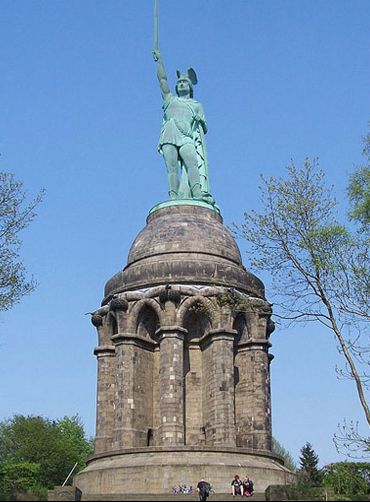The concept of asymmetric warfare, which has long since made its way into the common lexicon, can be explained as follows: if in a conventional war scenario, two forces collided numerically at par, most likely would win the one with the best technology available.
The balance's needle, therefore, would hang for that strength in the field that has a better tactical strategic structure and first-rate logistical support.
Let's take an example. If the Taliban forces had professional soldiers and if the latter were deployed in the open field, they would not stand a chance against American forces. The United States, being the dominators of the air with assault helicopters, fighters, armed drones and unopposed masters of the land with Abrams tanks and light armored vehicles, would rout the Taliban troops without problems.
So far the ideal context. But the conflicts are no longer based on the ability of a single faction to deploy the best technology available in the hope that it can prevail over the opposing one, but on the new conception of "war" turned into guerrilla warfare. The Taliban, in fact, do not affect Americans in a conventional manner, but with improvised homemade bombs (which led to the redesign of armored transport vehicles, now largely made with the V-shaped hull, to deflect the wave of shock of the explosion) placed in the most unthinkable places, with improvised kamikazes loaded with explosives, with real attacks elaborated by first-rate minds for situations, up to now, never foreseen or imagined.
In fact, the faction that adopts guerrilla warfare leaves no targets that are sensitive to the enemy. The latter, equipped with discriminating and superior weapons, in fact, would not be able to concentrate them against any target. In this way, technological advantage is nullified, transforming strength into weakness.
 Let's take another example. During the Russian invasion of Afghanistan, the Soviets deployed a massive contingent for a total of 130 thousand men (in the ten years of invasion around 600 thousand men alternated). The Soviets, fielded the best technology available with three motorized divisions, five brigades (including one formed by Spetsnaz) and four autonomous regiments, in addition to six thousand tanks and armored support vehicles.
Let's take another example. During the Russian invasion of Afghanistan, the Soviets deployed a massive contingent for a total of 130 thousand men (in the ten years of invasion around 600 thousand men alternated). The Soviets, fielded the best technology available with three motorized divisions, five brigades (including one formed by Spetsnaz) and four autonomous regiments, in addition to six thousand tanks and armored support vehicles.
The Russians, then, were lords of the sky (the dominion of the sky is a prerogative for victory on the field in a conventional scenario) with Mig-27 fighters, Su-25 fighter-bombers as well as tactical bombers like the Tu-16. Finally, Soviet assault troops were deployed on the field by transport helicopters, the most famous of which was and is the Hind (mil Mi-24), also called the "devil's cart". A beast that contrary to its contemporary of the era the Ah-1 Cobra, light and manageable, reflected in the plan the Russian idea of firepower and heavy armor. But the mujaheddin unleashed an unconventional guerrilla that found the Russians completely unprepared. Fighting the latter in the open, in fact, proved to be suicide (as happened during the first phases of the war). Facing them in more congenial terrain, on the other hand, meant changing the fortunes of war.
Fighting in the mountains, with rapid guerrilla actions (launching American Stinger missiles to shoot down helicopters or transport planes, strafing and fleeing) the Russians began to suffer heavy losses. The Hinds themselves, previously considered invincible by the combatants on horseback, became easy targets during the deployment phase of the troops on the rugged Afghan mountains. Yet another example of how much the technological gap, although it was unbridgeable between the parties, does not count for anything in an asymmetrical war. The Russians and their Spetsnaz, the best warriors of the USSR, understood this: although also trained in an unconventional warfare, they took a hard lesson from the shepherds who knew the mountains of their native country by heart, hitting and running away, practicing the technique of "hit and run" and in fact leaving no targets to hit. A lesson the Americans learned in Vietnam, at the cost of thousands upon thousands of deaths. But history is full of these examples.

Famous is that of Publius Quintilius Varus, Roman general and governor of Germany, commander of the Roman legions XVII, XVIII and XIX, about 20 thousand men including auxiliaries. He was annihilated, in September of nine AD, in the Teutoburg forest. The barbarians, thanks to their excellent knowledge of the paths and equipped in a lighter way than the Romans, destroyed the legions in three days, performing guerrilla actions. If those same barbarians commanded by Arminius (left image), had met the Romans in the open head and if they had clashed against the lines of the legions, they would have had no chance. But among the woods, those same armor that in a normal context, would have sanctioned the victory for the Romans, in an unconventional scenario, became heavy pieces of iron that slowed down the movements of the legionaries.
The "asymmetric war" therefore reinvents the very concept of armed confrontation. History teaches us that the technological and numerical gap, although it can be unbridgeable between the parties, does not always establish the victory of the strongest team. Indeed, the very awareness of being "stronger" sometimes prevents us from assuming effective counteroffensives or defenses against possible sorties, elaborated in a completely unexpected but equally lethal way.
Franco Iacch
(photo DoD Fed Russian, Entjesbe)












